Study and restore the Roman Pottery
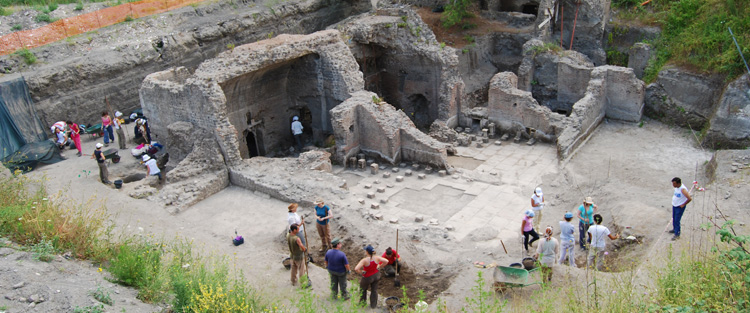
Our classes on Roman Pottery are developed to nurture new pottery specialists and advance research around Vesuvius. For 2019, we are rolling a month-long project on the pottery from the Suburban Baths in Pompeii and Pollena Trocchia, from the 1st to the 26th of July, and three introductory two-week sessions on the study and restoration of artefacts from Pollena Trocchia (June 3-14, July 29 - August 9, August 19-30).
The Suburban Baths in Pompeii

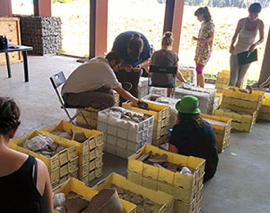
Work on this assemblage provides a good view on the pottery circulating in Pompeii, mostly for the pre-79 AD period and specifically from the 2nd c. BC to the day of the eruption, with a small amount from the period after the eruption.
Through these artefacts, students will get familiar to the major pottery classes while understanding how each room was actually used at the time of the eruption.
The Roman Villa with Baths in Pollena Trocchia
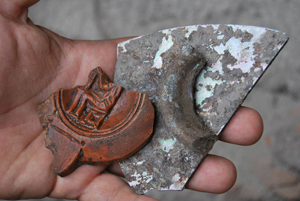
Our digging activities at this site, which have run for more than 10 years, brought to light the largest late antique pottery assemblage in Campania, mostly dated to the second half of the 5th c. AD, with a great variety of all regional productions as well as of imports from the Mediterranean shores, with a good percentage of African Red Slip ware.

Students benefit from this experience and are motivated to partake in the analysis of specific contexts. Until now, we have studied and published most of the rooms pertaining to the baths, thus we are now moving towards those of the proper villa.
During the 5th century AD, many of these areas were used as dumping and cemetery (mostly with infant burials in amphorae), though the assemblage changes significantly towards the villa.
The course on Pompeii and Pollena Trocchia
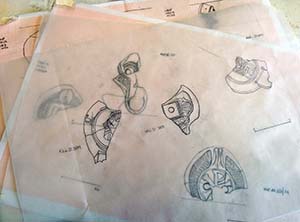
The month-long course on the pottery from Pompeii and Pollena Trocchia aims to teach the fundamental skills to process any ceramic assemblage from the washing and marking, to the different methods of drawing pottery; students will become familiar with the different pottery classes attested in Campania.
The study season includes a few formal lectures on specific topics in Roman pottery and much practical work on the potsherds, following our two-fold aim of studying the evidence while nurturing the most-talented archaeologists to become specialists.
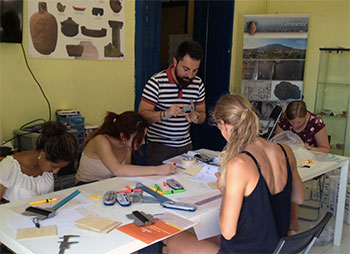
The course will run from 1st to the 26th of July, at the cost of 800 EUR. To apply, click here.
The courses on pottery study and restoration

After a general overview on how to categorise the objects and identify the pottery classes and types, the students will participate in all activities involved in the restoration of the artefacts, from the documentation (description, drawing, photography) to the first cleaning (with brushes, scalpels, chemical solvents), from the consolidation to the stitching to the final integration.
The study of the artefacts will proceed with powerpoint presentations alternated with practical activities such as division into classes, identification of shapes and types, basic skills in pottery drawing.
The courses will run from the 3rd to the 14th of June, from the 29th of July to the 9th of August, and from 19th to the 30th of August at the cost of 450 EUR each.
Taking part
The contribution includes all tuition and accommodation in our dig house in Pollena Trocchia. Those who apply will find out if they have been successful within three weeks of their application. Beyond this the Apolline Project does not charge, and students will need to cover their own living costs and travel to Italy. For participants, we will provide you with information about how to get to the accommodations from the airport or train station once you have received confirmation of acceptance to the programme. Academic credit can be provided upon request and negotiation with your host institution. For some universities this may cost extra depending upon the policy of your particular institution.
Please consider that places are limited and the number of applicants is generally pretty high (150 in 2012), therefore we encourage you to submit your application earlier rather than later.
Application process
The application process is easy and straightforward. Please follow this link and complete the electronic application.
To know more:
- discover why the Apolline Project was awarded the European Archaeological Heritage Prize in 2011;
- learn more about our research questions;
- learn more about the archaeological site in Pollena Trocchia;
- browse the photo album;
- visit our Facebook page.
Nota Bene: if you have landed directly in this webpage, you might want to take a look at our other activities here.
